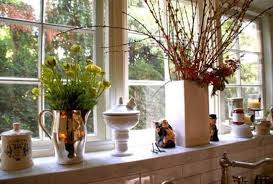
Window ledges, often overlooked in interior design, can transform the look and feel of a room when thoughtfully incorporated. Beyond their basic function of supporting windows, they serve as versatile surfaces that can enhance both aesthetics and functionality in a space. By focusing on design, materials, and thoughtful arrangement, window ledge can become a striking feature in modern interiors.
The choice of material plays a crucial role in defining the style and durability of a window ledge. Natural wood adds warmth and character, complementing traditional and rustic interiors, while engineered materials like MDF or laminate offer sleek finishes suitable for contemporary spaces. Stone and marble ledges exude elegance and luxury, creating a sophisticated focal point for living rooms, kitchens, or bedrooms. Selecting the right material not only ensures longevity but also enhances the overall visual appeal of the room.
Designing with window ledges requires attention to proportion and placement. Ledges should align with the window frame and the scale of the room, maintaining a balanced look. Oversized ledges can double as seating areas or display platforms, while narrow ledges offer subtle accents without overwhelming the space. By integrating ledges seamlessly into the architecture, designers can achieve harmony and cohesion, ensuring that these surfaces enhance rather than disrupt the room’s layout.
Functionality is another important consideration. Stylish window ledges provide practical solutions for storage, decoration, and comfort. They can house plants, books, decorative pieces, or even act as a cozy nook for reading and relaxation. In kitchens, wide window ledges offer extra counter space, perfect for herbs or small appliances. Meanwhile, in living spaces, ledges serve as display areas for artwork, vases, and personal collections, contributing to a personalized and inviting atmosphere.
Lighting plays a pivotal role in highlighting the charm of window ledges. Natural light from the window can accentuate textures, colors, and decor items placed on the ledge, creating a warm and welcoming ambiance. Incorporating subtle artificial lighting, such as LED strips or small accent lamps, can further enhance the aesthetic appeal, especially in the evenings, adding depth and dimension to the design.
Personalization is key when designing with window ledges. By considering individual tastes, lifestyle, and the overall theme of the interior, ledges can be styled in endless ways. Minimalist designs benefit from clean lines and a few curated pieces, while eclectic interiors can showcase a mix of colors, textures, and decorative items. The adaptability of window ledges allows designers and homeowners alike to experiment creatively, ensuring that each space feels unique and thoughtfully composed.
In conclusion, stylish window ledges are more than functional architectural features—they are design elements that can elevate the elegance and practicality of any interior. Through careful selection of materials, thoughtful proportions, and creative styling, window ledges offer opportunities for both beauty and utility. By embracing their potential, interiors can achieve a harmonious blend of form and function, making every window a statement of style and sophistication.

